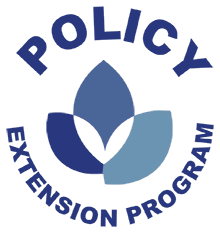- The quality of surface waters are assessed within a water body to ensure they are meeting water quality standards set forth by rule 62-302.
- If surface water does not meet the water quality standards for a particular pollutant it is considered impaired.
- A TMDL is then established for each pollutant of concern within an impaired water body.
- Once TMDLs have been established, a Basin Management Action Plan (BMAP) is developed for the area. (See more information in the BMAP PEP Section)

Conversations to have:
Producers and agricultural business owners should be aware of the potential water pollution caused by farm chemicals, including fertilizers, pesticides, farm waste, etc. Regulated pollutant threshold limits should be identified while making decisions about farm management strategies and adjusted to ensure water bodies do not become impaired. Alternative farming practices recommended by UF/IFAS and the government (Best Management Practices or BMPs) should be taken into consideration to enhance future sustainability of water resources.
“The quality of water and the quality of life in all its infinite forms are critical parts of the overall, ongoing health of this planet of ours…”
Sir Peter Blake
The general public needs to understand sources of pollutants, particularly landscape fertilizers, and the impact they can have on water bodies in their area. Best Management Practices (BMPs) are approaches should be applied to properly manage water, fertilizer, and pesticide uses and retain or even improve water resource quality.
Decision makers need to understand current regulations related to water pollutant management, what science can tell us about water quality, and public opinion of water issues which provides a broad snapshot of understanding on a complex topic. By understanding current policy, scientific facts about pollutants and public opinion, decision makers’ will be prepared to take educated action when developing new policy.
Important Items
Sources of pollutants: Pollutants impacting water quality include pathogens, nutrients, sediment, and metals. Currently, the major pollutants found in Florida are nutrients, such as nitrogen and phosphorus, through leaching and runoff.
Threshold limits on pollutants: Threshold limits on pollutants are set for in rule 62-302 of Florida’s Administrative code that can be found in the Surface Water Quality Standards Chapter available at: https://www.flrules.org/gateway/ChapterHome.asp?Chapter=62-302.
Impacts to the environment: Nutrient pollutants can lead to algae blooms in water bodies, including streams, lakes, and others. They can be harmful to humans, wildlife, and tourism.
Best Management Practices: BMPs are the most effective, practical means of preventing or reducing pollution from nonpoint sources.
Water quality monitoring: Since water quality decrease can be influenced by seasonal climate and human activities, water quality should be monitored continuously to ensure water use safety.

